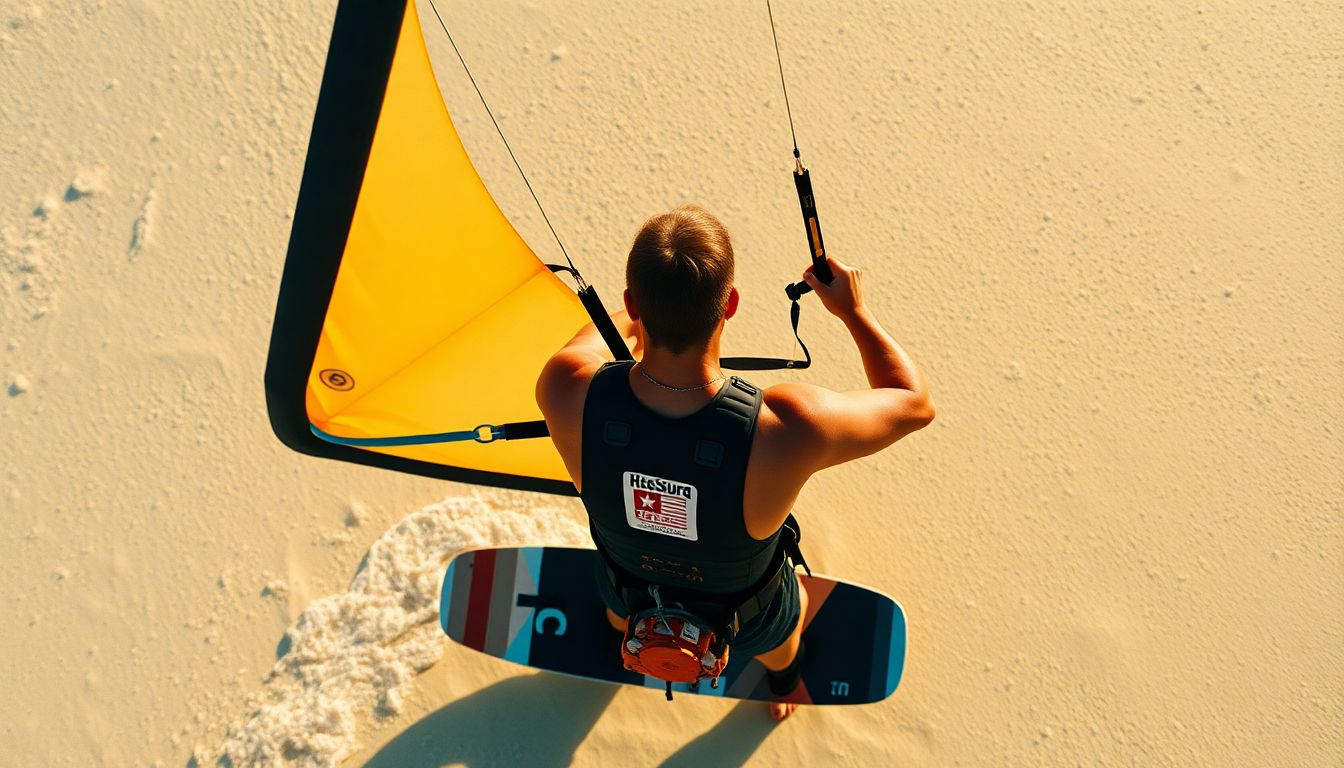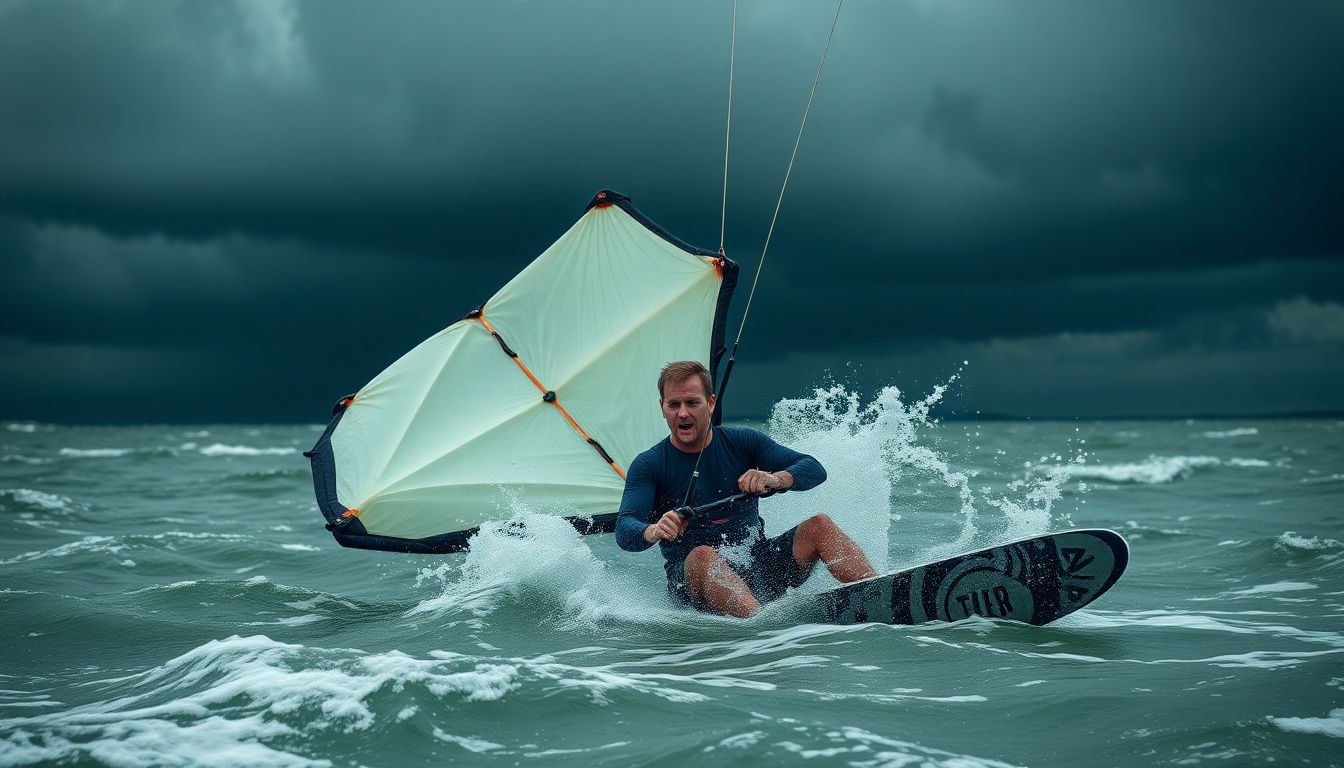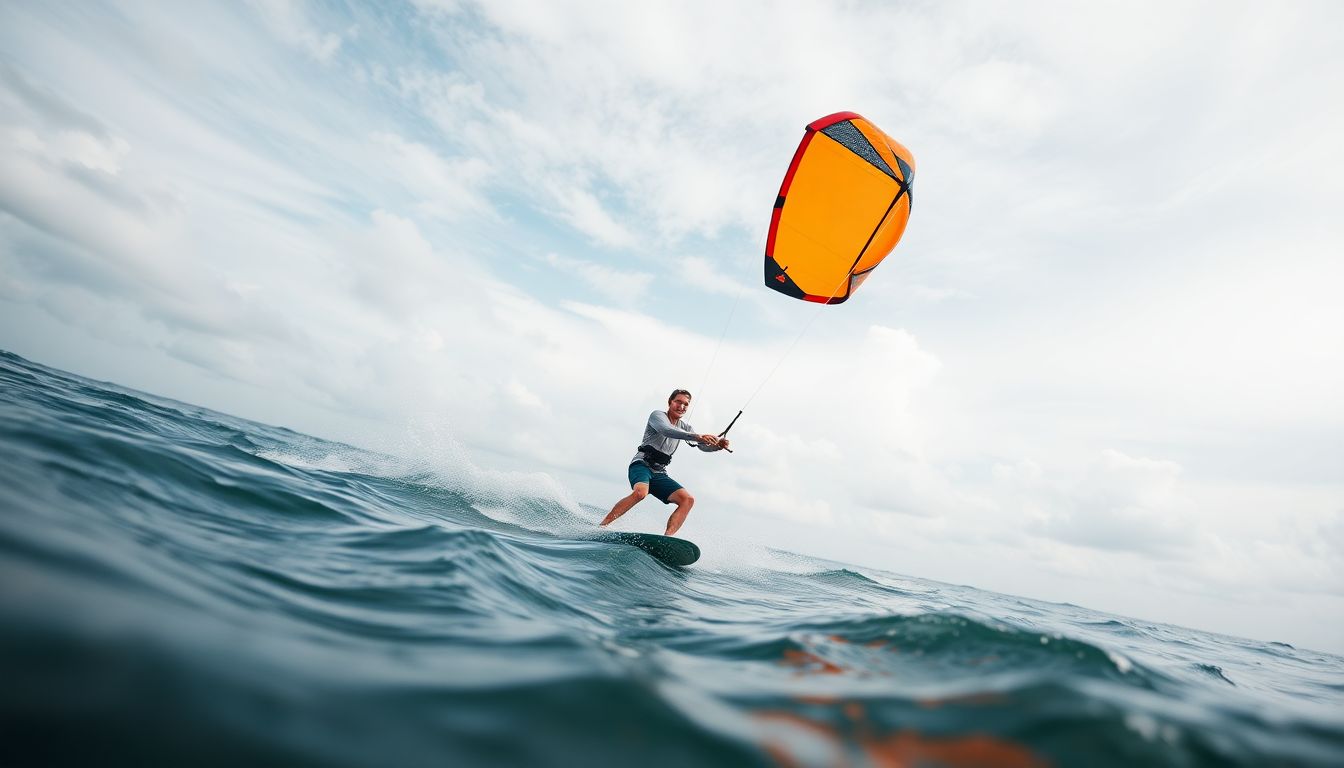From the excitement of gliding over waves to the rush of catching the wind, kitesurfing offers an unmatched thrill. However, the experience can quickly turn frustrating if your gear isn’t set up correctly. This guide transforms your kitesurfing routine from a potential headache into a smooth, enjoyable process. Let’s get started on setting up your kitesurfing gear like a pro!
[Also see our article A Beginner’s Guide to Choosing the Right Kitesurfing Gear].
Section 1: Pre-Flight Checks: Gear Inspection and Preparation
Before hitting the water, a thorough inspection is necessary to ensure everything is in good shape.
Essential Checklist: Before You Even Touch the Water
- Kite: Check for tears or damage.
- Lines: Look for frays or knots.
- Pump: Ensure it’s functioning well.
- Safety gear: Confirm it’s accessible and in good condition.
Inspecting Your Kite: Lines, Pumps, and Safety Systems
Take a moment to inspect your kite. Make sure the lines are untangled and undamaged, as these are crucial for control. Don’t forget to check your pump; it should inflate easily and not have leaks. Safety systems, such as quick releases and leashes, should function properly to keep you safe.
Kiteboarding Gear Maintenance: Tips for Longevity
Keep your gear lasting longer with these simple steps:
- Rinse your kite with fresh water after sessions.
- Store it in a cool, dry place.
- Inspect and repair any damage immediately.
Section 2: Kite Assembly: A Step-by-Step Guide to Success
Once your gear is inspected, it’s time for assembly.
Unpacking and Laying Out Your Gear: Efficient Organization
Begin by unpacking your kite and laying all components out in a logical order. This helps to avoid confusion and saves time.
Connecting the Lines: Avoiding Common Mistakes
Attach the lines to the kite carefully. Ensure that the front and back lines are connected correctly to prevent flying mishaps. Pay attention to the color-coding on your lines for seamless setup.
Inflating Your Kite: Proper Pressure and Techniques
Use the pump to inflate your kite until it’s firm. Aim for recommended pressure as per the manufacturer’s guidelines. A properly inflated kite performs better and offers more stability.
Section 3: Board Preparation: Optimizing for Your Conditions
Your board setup can greatly influence your ride quality.
Choosing the Right Board Based on Conditions
Identify the right board for current wind and water conditions. Larger boards are good for lighter winds, while smaller boards excel in stronger winds.
Setting Up Your Fins: Impact on Performance and Stability
Fins can drastically affect your ride. Use larger fins for more control in rough waters and smaller fins for speed and maneuverability.
Straps and Footstraps: Finding the Perfect Fit
Ensure your footstraps fit snugly but comfortably. You should be able to slide your feet in and out with ease while still feeling secure during your ride.

Section 4: Launching Your Kite: Mastering the Art of the Launch
The launch is a crucial moment that sets the tone for your session.
Safety First: Assessing Wind Conditions and Launch Area
Before launching, evaluate the wind conditions and ensure the launch area is clear of obstacles. A safe environment is key for a successful start.
Kite Launch Techniques: Body Positioning and Control
Stand with your back to the wind, holding the kite at a 45-degree angle. This position allows the kite to fly smoothly into the sky as you gently pull on the lines.
Troubleshooting Common Launch Problems: Quick Fixes
If your kite doesn’t launch properly, consider:
- Adjusting the angle of the kite.
- Checking for line tangles.
- Ensuring there’s enough wind.
Section 5: Post-Session Routine: Storage and Maintenance
After an exhilarating session, taking care of your gear is just as important.
Rinse and Dry: Protecting Your Gear from Corrosion
Always rinse your gear with fresh water after a session to remove salt and sand. Allow everything to dry completely before storing.
Proper Storage Techniques: Extending the Life of Your Equipment
Store your kite in a dry, dark place to protect it from UV rays and other damage. Use a kite bag for extra protection and organization.
Regular Maintenance Schedule: Optimizing Gear Performance
Create a maintenance routine to check your gear periodically. This includes inspecting lines, kites, and boards to prevent unforeseen issues on your next ride.
Conclusion: From Beginner to Pro: Mastering Your Kitesurfing Setup
Transforming your kitesurfing experience hinges on a proper setup. Master these techniques to ensure safe and enjoyable sessions.
Key Takeaways: Ensuring Safe and Efficient Kitesurfing Sessions
- Always inspect and maintain your gear.
- Follow assembly steps precisely.
- Understand wind and water conditions.
Resources: Where to Find Expert Advice and Further Learning
Look for local kitesurfing schools or forums online where experienced riders share tips and tricks for improved performance. For more see here.
Embrace the Journey: Continuous Improvement in Kitesurfing
Kitesurfing is not just a sport; it’s a journey. Enjoy every ride and learn from each session to continuously elevate your skills.








